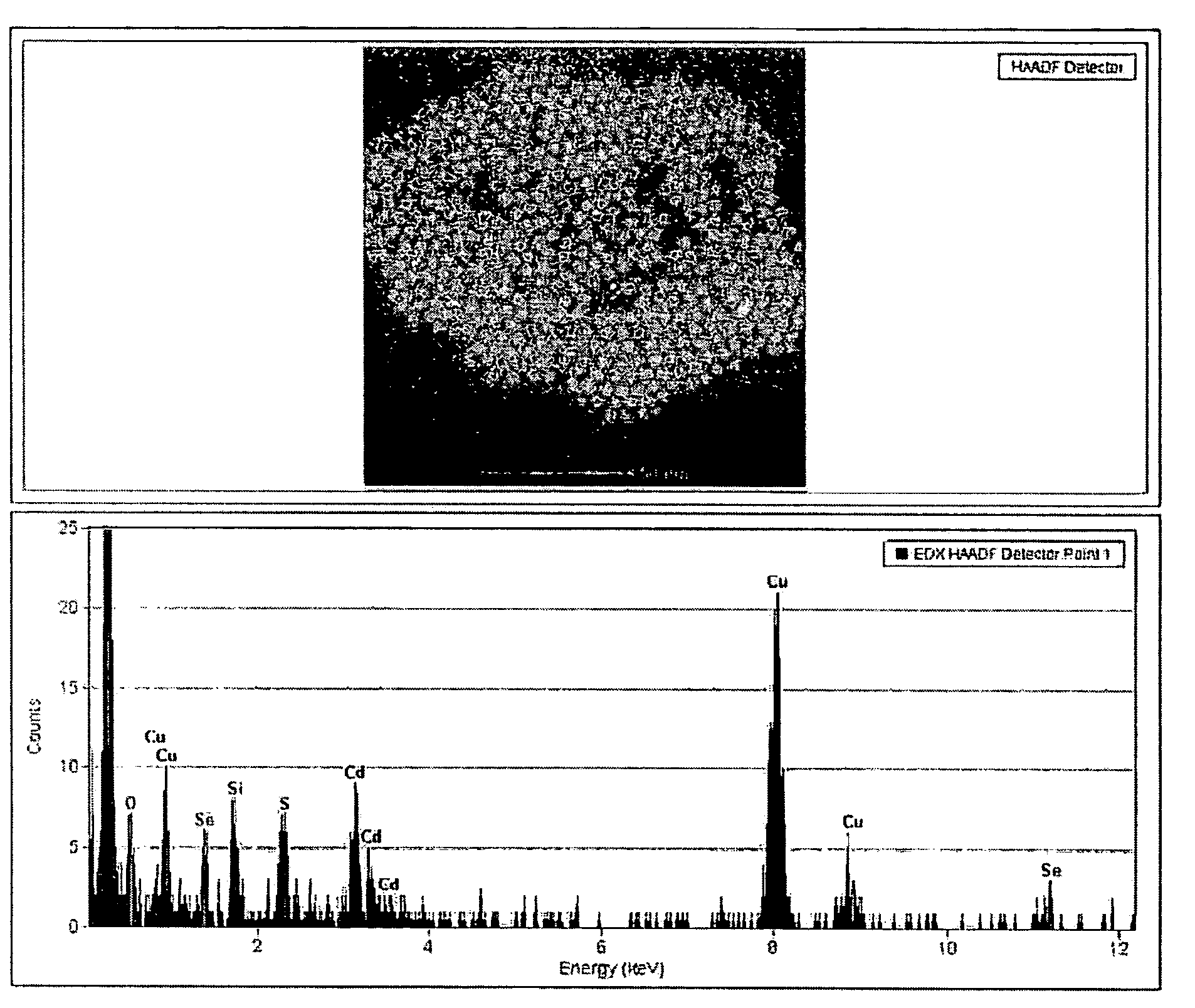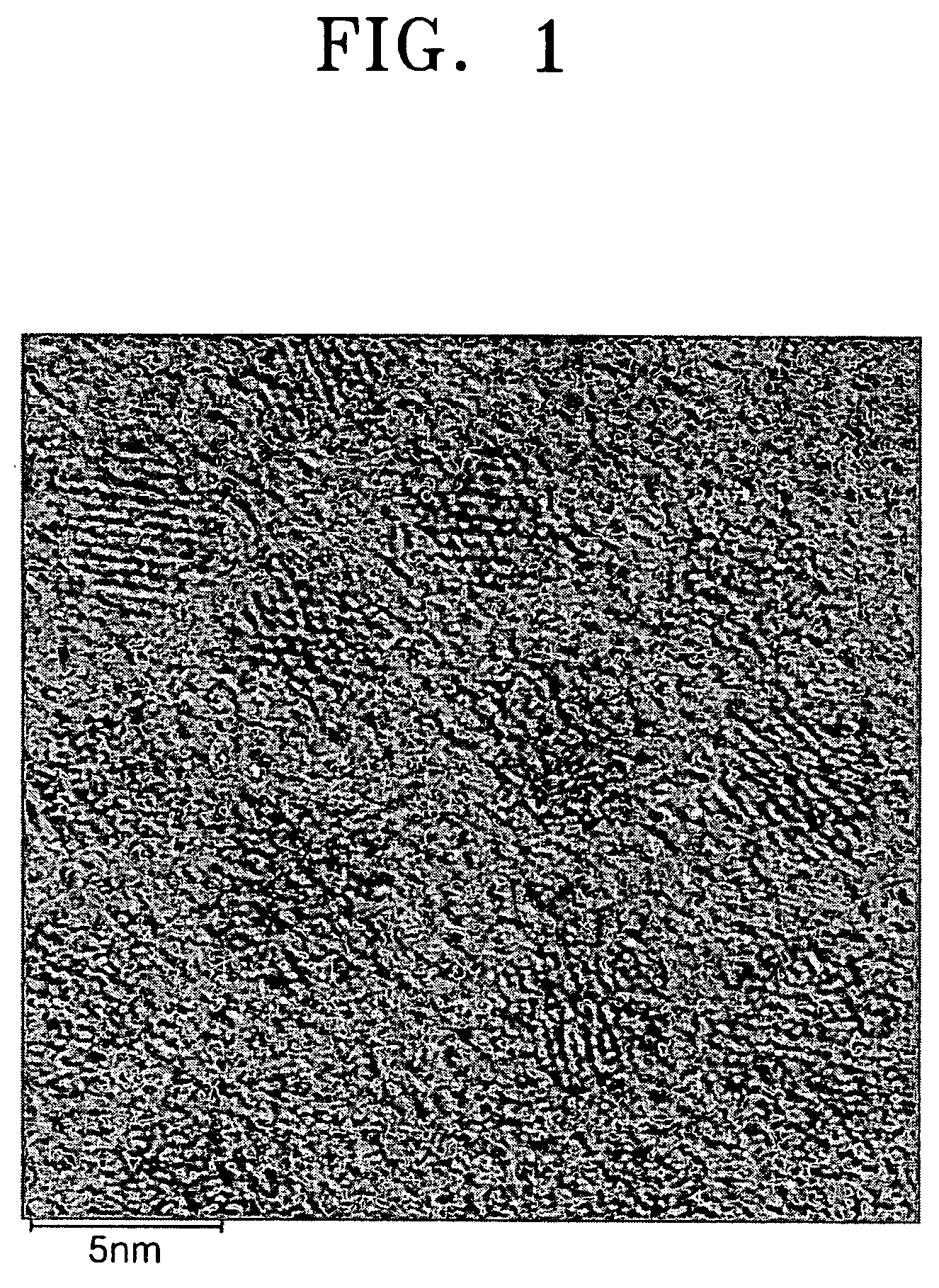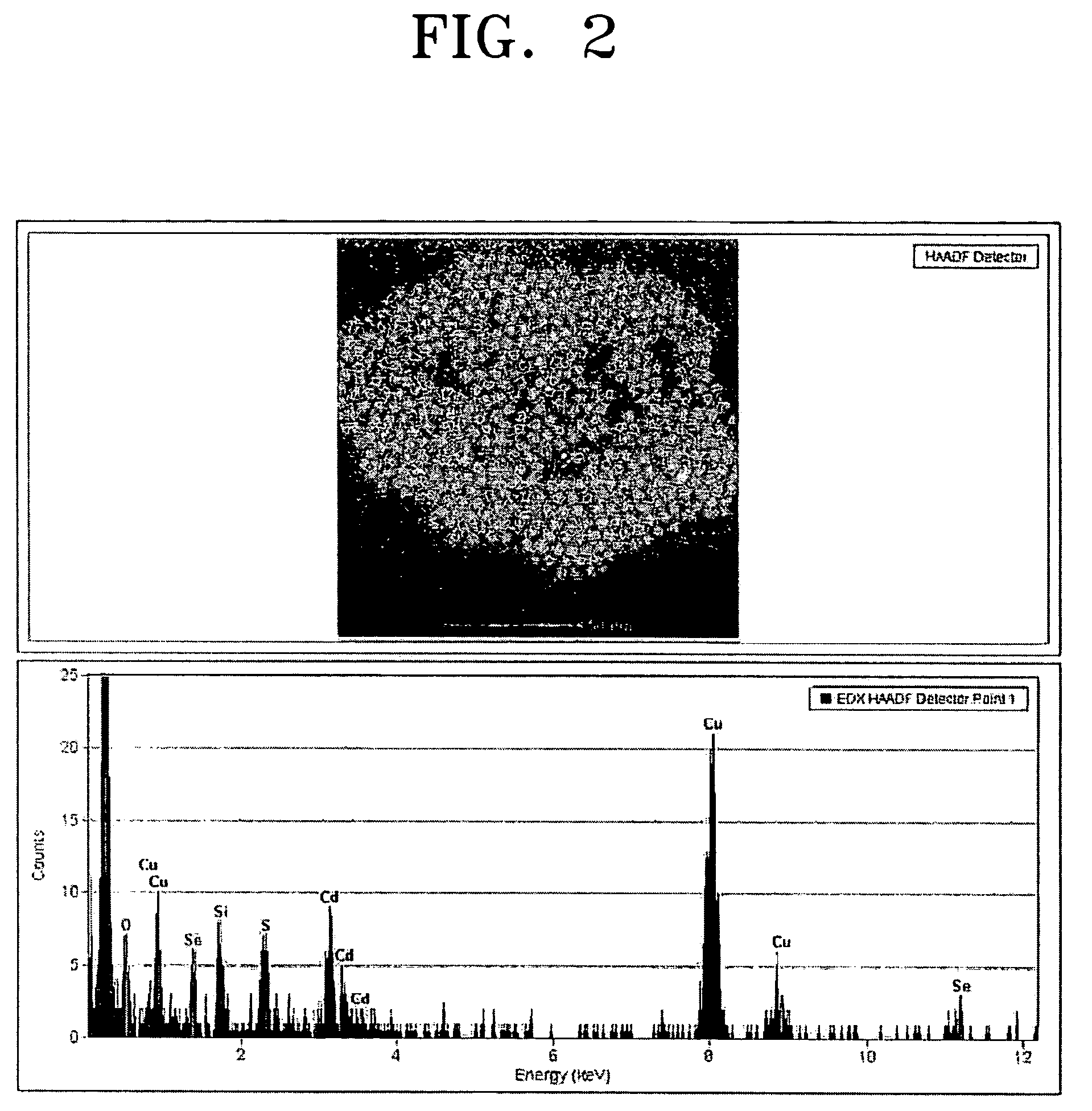Alloy type semiconductor nanocrystals and method for preparing the same
a technology of alloy-type semiconductors and nanocrystals, which is applied in the field of alloy-type semiconductor nanocrystals, can solve the problems of difficult fabrication of commercially available semiconductor devices, limited solvent methods, and difficult formation of reproducible and uniform quantum structures in solvents containing a large amount of impurities, and achieves high quantum efficiency and uniform sizes and shapes
- Summary
- Abstract
- Description
- Claims
- Application Information
AI Technical Summary
Benefits of technology
Problems solved by technology
Method used
Image
Examples
example 1
Preparation of CdSeS Nanocrystals
[0063]16 g of tri-octyl amine (referred to as TOA, hereinafter), 0.5 g of oleic acid, and 0.4 mmol of CdO were simultaneously placed in a 100 ml flask provided with a reflux condenser and stirred at 300° C. to obtain a Cd precursor solution.
[0064]Separately, Se powders were dissolved in tri-octyl phosphine (referred to as TOP, hereinafter) to obtain a Se-TOP complex solution with a Se concentration of about 0.1M. S powders were dissolved on TOP to obtain S-TOP complex solution with a S concentration of about 4M.
[0065]0.5 ml of S-TOP complex solution 0.5 ml of the Se-TOP complex solution were rapidly added to the Cd precursor solution and stirred for about 4 minutes.
[0066]When the reaction of the resultant mixture was terminated, the reaction temperature was rapidly reduced to room temperature and then centrifugation was performed with addition of an ethanol as a non-solvent. A supernatant was decanted and discarded. A precipitate was dispersed in a t...
example 2
Preparation of ZnCdSe Nanocrystals
[0072]16 g of TOA, 0.5 g of oleic acid, 0.2 mmol of zinc acetyl acetonate, and 0.2 mmol of cadmium (Cd) oxide were simultaneously placed in a 100 ml flask provided with a reflux condenser and stirred at 300° C. to obtain a Zn and Cd precursor solution.
[0073]Separately, Se powders were dissolved in TOP to obtain a Se-TOP complex solution with a Se concentration of about 0.25M. 1 ml of the Se-TOP complex solution was rapidly added to the Zn and Cd precursor solution and stirred for about 2 minutes.
[0074]When the reaction of the resultant mixture was terminated, the reaction temperature was rapidly reduced to room temperature and then centrifugation was performed with addition of an ethanol as a non-solvent. A supernatant was decanted and discarded. A precipitate was dispersed in a toluene and then a PL spectrum in the solution was measured.
[0075]The PL spectrum showed an emission wavelength of about 456 nm and FWHM of about 26 nm.
example 3
Preparation of CdSe / CdS Nanocrystals
[0076]16 g of TOA, 0.5 g of oleic acid, and 0.4 mmol of cadmium acetate were simultaneously placed in a 100 ml flask provided with a reflux condenser and stirred at 300° C. to obtain a Cd precursor solution.
[0077]Separately, Se powders were dissolved in TOP to obtain a Se-TOP complex solution with a Se concentration of about 0.25M. 1 ml of the Se-TOP complex solution was rapidly added to the Cd precursor solution and stirred for about 4 minutes.
[0078]S powders were dissolved in TOP to obtain a S-TOP complex solution with a S concentration of about 2 M. 1 ml of the S-TOP complex solution was dropwise added to the CdSe-containing solution and stirred.
[0079]When the reaction of the resultant mixture was terminated, the reaction temperature was rapidly reduced to room temperature and then centrifugation was performed with addition of an ethanol as a non solvent. A supernatant was decanted and discarded. A precipitate was dispersed in a toluene and the...
PUM
| Property | Measurement | Unit |
|---|---|---|
| molar ratio | aaaaa | aaaaa |
| temperature | aaaaa | aaaaa |
| temperature | aaaaa | aaaaa |
Abstract
Description
Claims
Application Information
 Login to View More
Login to View More - R&D
- Intellectual Property
- Life Sciences
- Materials
- Tech Scout
- Unparalleled Data Quality
- Higher Quality Content
- 60% Fewer Hallucinations
Browse by: Latest US Patents, China's latest patents, Technical Efficacy Thesaurus, Application Domain, Technology Topic, Popular Technical Reports.
© 2025 PatSnap. All rights reserved.Legal|Privacy policy|Modern Slavery Act Transparency Statement|Sitemap|About US| Contact US: help@patsnap.com



